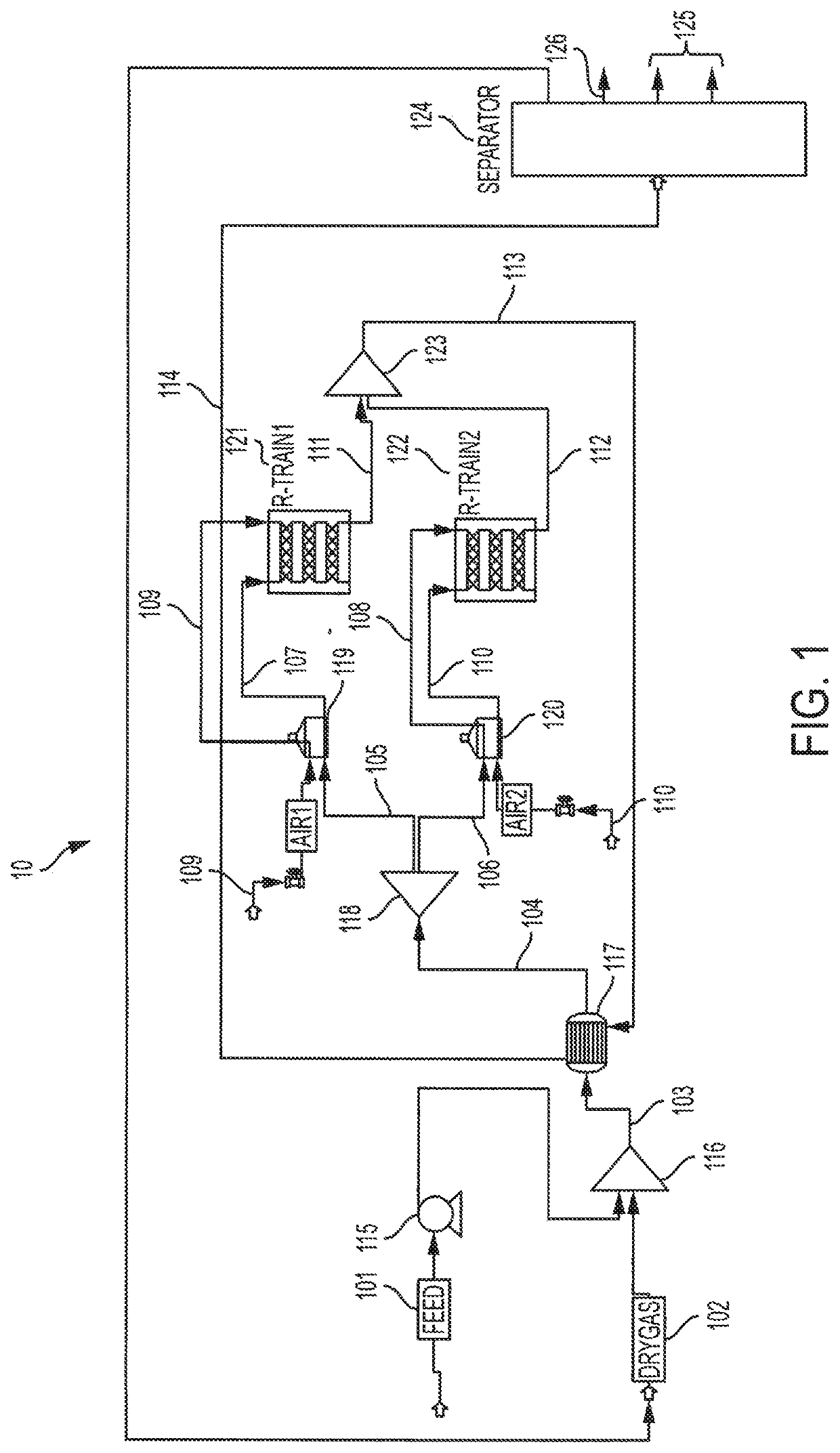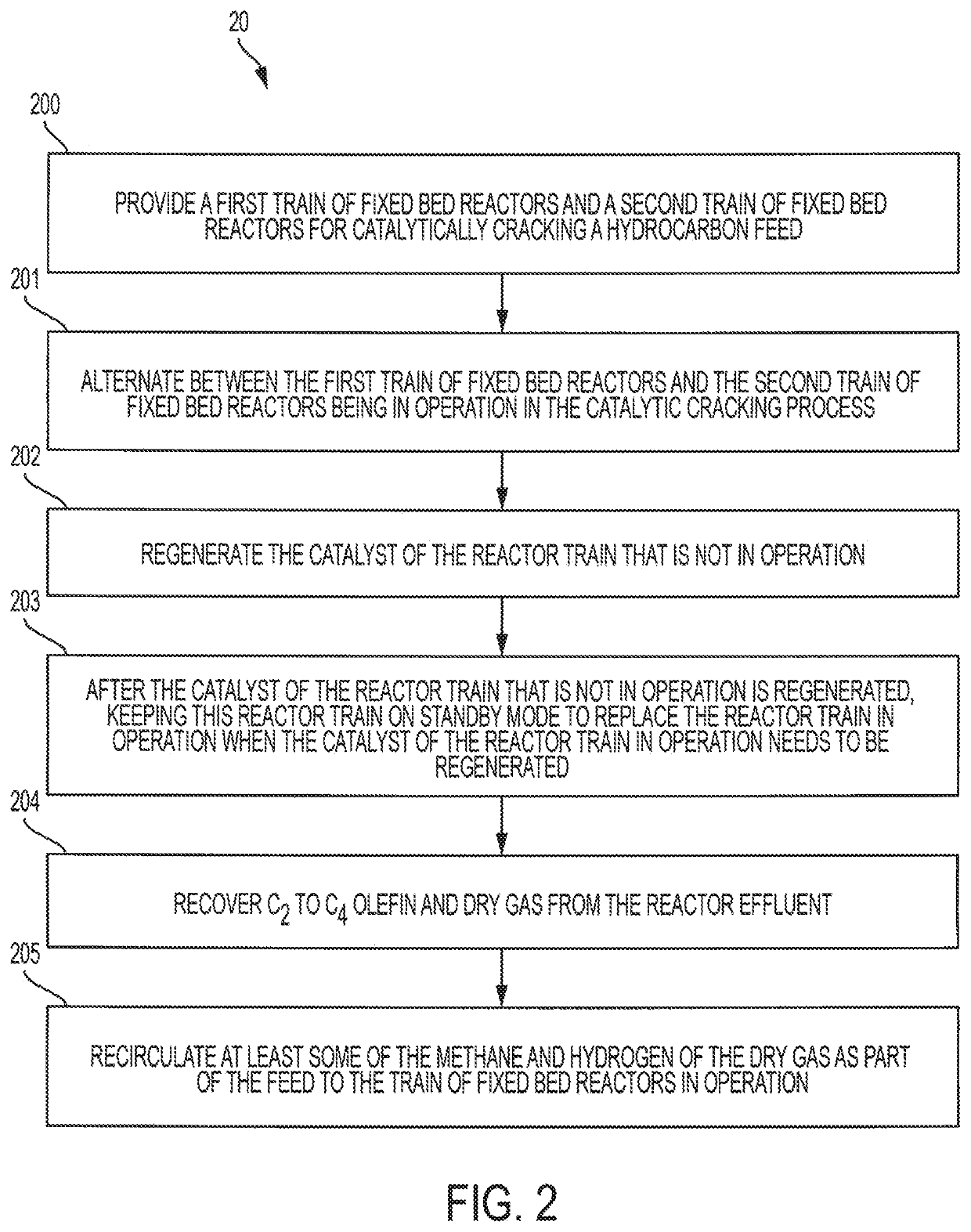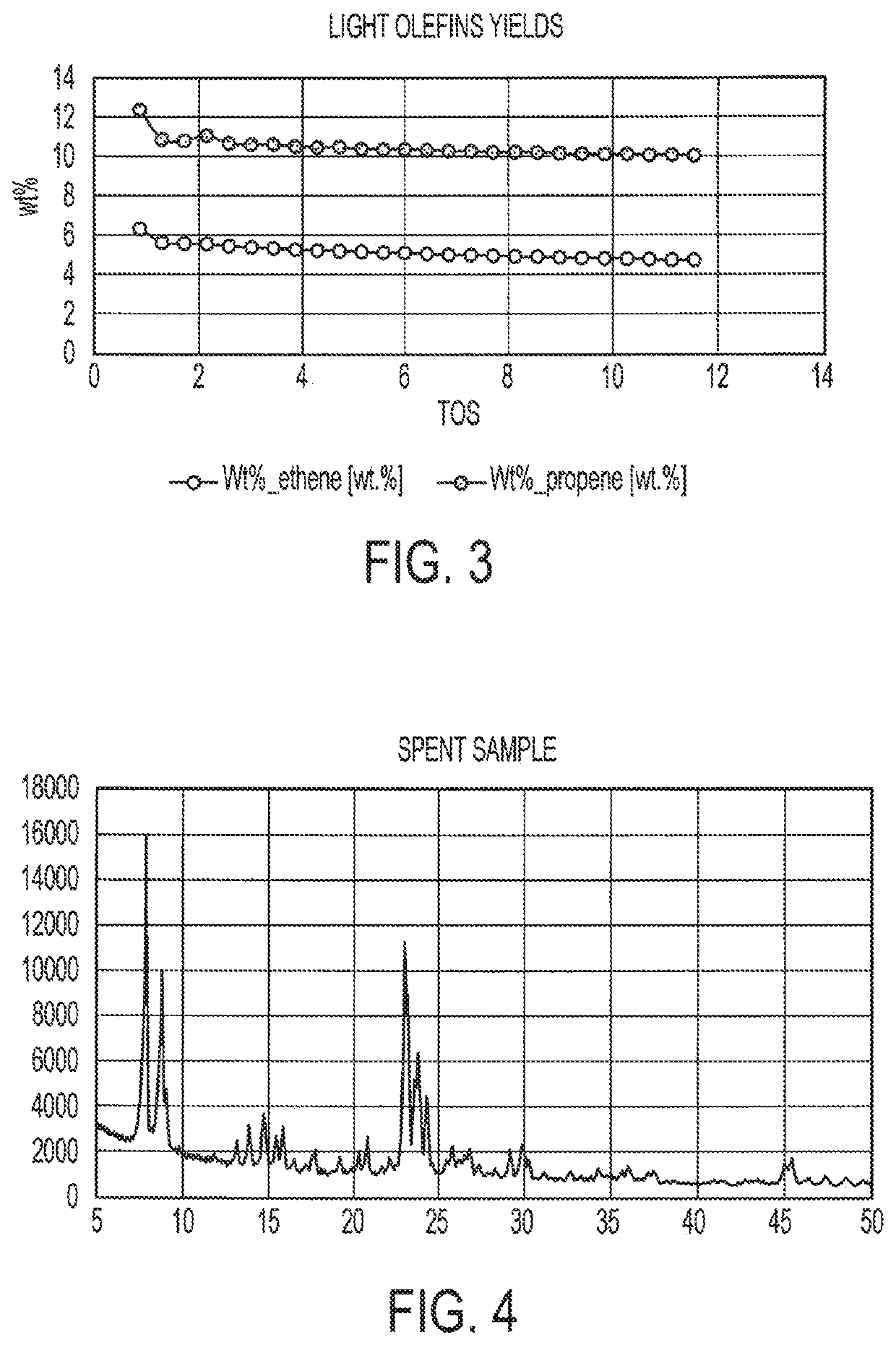Naphtha catalytic cracking for light olefins production over cyclic regenerative process with dry gas diluent
a technology of dry gas diluent and catalytic cracking, which is applied in the direction of catalyst regeneration/reactivation, hydrocarbon oil treatment products, physical/chemical process catalysts, etc., can solve the problems of high selectively and high yield, less effective or inactive catalyst, and difficult to achieve high yield
- Summary
- Abstract
- Description
- Claims
- Application Information
AI Technical Summary
Benefits of technology
Problems solved by technology
Method used
Image
Examples
example 1
[0046]In Example 1, a test was carried out in which naphtha was cracked catalytically over fixed bed reactor and fluidized bed reactor pilot plant. The naphtha feed had the following composition (Table 1):
[0047]
TABLE 1Light Naphtha CompositionFeed (LSRN)N-C528.8I-C511.8Cycl-C51.9N-C624.5I-C626.9Cycl-C64.6Benzene1.3C70.3sum100
[0048]In Example 1, a catalyst was tested for light naphtha cracking using fixed bed reactor and fluidized bed pilot plant. Reactor temperature, flow rate and steam rate are provided in Table 2. Residence time of the fixed bed and the fluidized bed pilot plant was 10 minutes and less than a minute, respectively. The fixed bed had the flexibility to vary the residence time unlike fluid catalytic cracking (FCC) type process, where the residence time was limited to below a minute. As can be seen, in Table 2, the yield toward light olefin is higher by approximately 10% when a fixed bed is used.
[0049]
TABLE 2Light Naphtha Cracking Over Fixed And Fluidized ReactorsReac...
example 2
Impact of Methane as a Dry Gas and Diluent
[0050]In Example 2, the light naphtha feed was cracked in the absence of steam in a fixed bed reactor. The reaction was at a temperature of 650° C., a pressure of 3 bars, and a WHSV of 40 hr−1. The catalyst used was a modified ZSM-5 mixed with binder and filler.
[0051]The product yields of light olefins and aromatics were 37 wt. % and 6 wt. %. The yields of methane, ethane and propane were 3.4 wt. %, 4.6 wt. %, and 7 wt. %, respectively. The unconverted feed was 40 wt. %. The remaining portions were naphthene and higher olefins.
example 3
Time On Stream
[0052]In Example 3, the light naphtha feed was cracked in the absence of steam in a fixed bed reactor at a temperature of 600° C., a pressure of 4 bars, and WHSV of 40 hr−1. The catalyst contained less than 35 wt. % zeolite. The products yields were recorded at different time on stream. The ethylene and propylene yields are shown in FIG. 3, which show substantially constant or constant values over the 11 hours recorded.
PUM
| Property | Measurement | Unit |
|---|---|---|
| temperature | aaaaa | aaaaa |
| pressure | aaaaa | aaaaa |
| temperature | aaaaa | aaaaa |
Abstract
Description
Claims
Application Information
 Login to view more
Login to view more - R&D Engineer
- R&D Manager
- IP Professional
- Industry Leading Data Capabilities
- Powerful AI technology
- Patent DNA Extraction
Browse by: Latest US Patents, China's latest patents, Technical Efficacy Thesaurus, Application Domain, Technology Topic.
© 2024 PatSnap. All rights reserved.Legal|Privacy policy|Modern Slavery Act Transparency Statement|Sitemap



